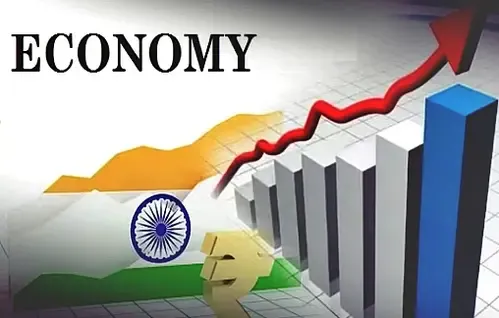How Are India’s Enhanced Fiscal Dynamics Driving Growth and Controlling Inflation?

Synopsis
Key Takeaways
- India's capital expenditure has doubled post-pandemic, enhancing fiscal dynamics.
- Fiscal deficit consolidation is expected to continue, with projections for FY2026.
- Inflation management has improved, with CPI averaging 4.9% since 2016.
- Tax buoyancy has shown a positive trend, aiding fiscal consolidation.
- RBI dividends have significantly contributed to non-tax revenues.
New Delhi, June 18 (NationPress) The fiscal dynamics of India have significantly improved at the aggregate level in the aftermath of the pandemic, showcasing a remarkable transformation in the quality of spending. This is evidenced by a surge in capital expenditure by the government over the last five years, as detailed in a report by Morgan Stanley.
The findings of the report suggest that the positive fiscal dynamics are beneficial for both the growth composition and inflation control of the Indian economy.
Notably, the accelerated pace of revenue deficit consolidation is indicative of an enhanced spending mix, observed not only at the Central level but also among the states. A significant change since the pandemic is the increased focus on capital expenditure by the Centre, with Central government capex rising to 3.2 percent of GDP in FY2025 from 1.6 percent of GDP in FY2020 (prior to the pandemic), according to the report.
Likewise, state-level capex is projected to be 2.3 percent of GDP in FY2025, up from 1.9 percent of GDP before the pandemic.
The report anticipates a further consolidation of the Central government fiscal deficit, albeit at a slower rate, targeting 4.4 percent of GDP in FY2026, while the states' deficit is expected to narrow to 2.6 percent of GDP.
Furthermore, the report emphasizes that sound fiscal dynamics, characterized by deficit consolidation and enhanced spending quality, are favorable for growth and inflation management. A flexible inflation-targeting framework has also played a crucial role in mitigating inflation volatility. Indeed, the Consumer Price Index (CPI) inflation has averaged 4.9 percent since 2016, compared to 7.7 percent in the preceding four years. This trend holds positive implications for the cost of capital, particularly over the medium term.
Additionally, the report indicates an upswing in tax buoyancy within the Indian economy. The Centre's gross tax revenue reached 11.5 percent of GDP in FY2025, an increase from 9.9 percent of GDP in FY2020, remaining stable within the range of 11.3-11.7 percent of GDP over the past four years.
The enhanced strength of tax revenues is crucial for facilitating fiscal deficit consolidation. Since the pandemic, tax buoyancy has averaged at 1.2 and is tracking at 0.98 in FY2025, compared to a pre-pandemic average of 0.9. The budget projects an increase in gross tax revenues to 12 percent of GDP in FY2026.
According to the report, robust dividend payouts from the RBI and other public sector undertakings (PSUs) have buoyed non-tax revenues, with their share tripling to 0.9 percent of GDP in FY2025 from 0.3 percent of GDP in FY2021.
Indeed, dividends from the RBI have been on the rise in recent years, averaging 0.4 percent of GDP since the pandemic and peaking at a record Rs 2.7 lakh crore (or 0.7 percent of GDP) in FY2026. Moreover, the PSU dividends received by the government in FY2025 amounted to Rs 74,000 crore, reflecting a 16 percent year-on-year increase, with the largest contributions from Coal India, followed by ONGC.









